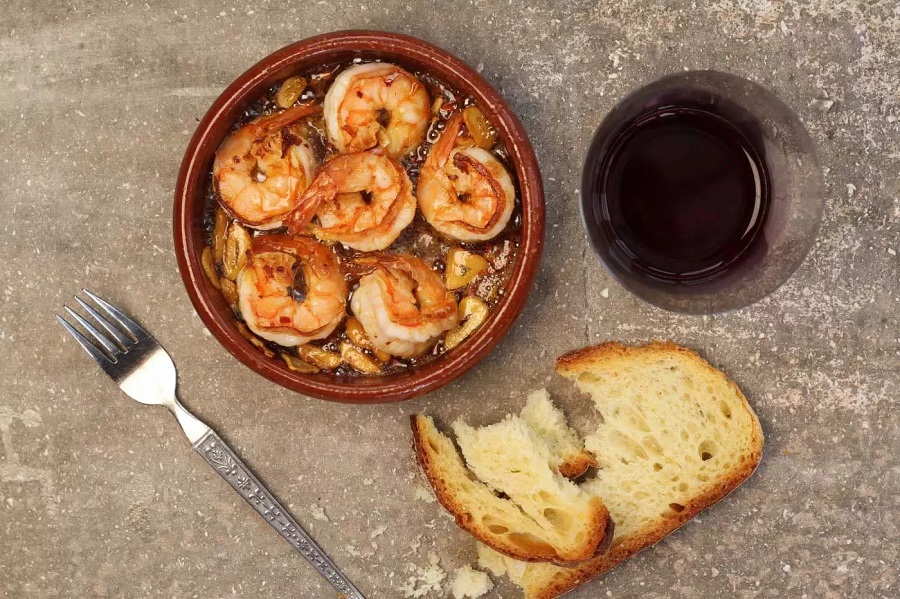Food trends, those fleeting and ubiquitous culinary phenomena, capture our attention and often end up on our plates. But what drives these trends? It’s a fascinating interplay of science, culture, innovation, and social media. Delving deeper, we discover a world where science influences flavor profiles, cultural traditions inspire novel creations, and savvy marketing propels dishes into the limelight.
The Science of Flavor: Decoding What Tastes Good
Science plays a significant role in shaping food trends. Here’s how:
- Understanding Sensory Perception: Scientists study how our senses – taste, smell, sight, and texture – interact to create flavor perception. This knowledge allows food manufacturers to create highly palatable products that cater to specific preferences.
- The Power of Umami: Umami, the savory “fifth taste,” is a major trend driver. Chefs leverage ingredients rich in umami, like mushrooms or fermented foods, to create crave-worthy dishes.
- Fat and Flavor: The science of fat perception explains why certain high-fat foods are so appealing. However, healthier alternatives are emerging, utilizing plant-based fats and flavor enhancements to create satisfying, lower-fat options.
Cultural Cross-pollination: A Melting Pot of Culinary Inspirations
Food trends are often a melting pot of global influences:
- Fusion Cuisine: Bringing together ingredients and techniques from different cultures creates exciting new flavor combinations. Think Korean tacos or Peruvian ceviche gaining mainstream popularity.
- Street Food Takes Center Stage: Once relegated to street vendors, street food is now inspiring restaurant menus worldwide. Regional specialties like bao buns or poke bowls gain international recognition.
- Social Media and the “Foodie” Culture: The rise of food photography and social media platforms has fueled interest in international cuisine. Instagrammable dishes with vibrant colors and unique presentations go viral, sparking a desire to try them.
Innovation Through Technology: Reimagining Traditional Foods
Technology is transforming the food industry, leading to innovative trends:
- Plant-Based Alternatives: Plant-based meat and dairy alternatives made using innovative technologies are gaining popularity. These options cater to vegetarians, vegans, and those seeking healthier or more sustainable food choices.
- Lab-Grown Meat: The science behind lab-grown meat, which utilizes animal cells to grow meat in a controlled environment, is still in its development stages but has the potential to revolutionize food production.
- Food Printing: 3D food printing allows for the precise creation of customized and visually stunning dishes, offering exciting possibilities for the future of food presentation and personalization.
Marketing and Hype: The Power of Persuasion
While science, culture, and innovation drive the creation of food trends, it’s marketing that brings them to the forefront:
- Celebrity Endorsements: Celebrities promoting specific diets or food products can significantly influence consumer behavior.
- Social Media Marketing: Targeted social media campaigns can generate buzz and excitement around new food trends, encouraging people to try them.
- Packaging and Branding: Appealing packaging and branding play a crucial role in capturing consumer attention and making a new food trend seem desirable.
The Cyclical Nature of Trends: A Look Back to Move Forward
Food trends are cyclical. Classic dishes and ingredients are often reinterpreted for a new generation. Understanding these cycles can help predict future trends:
- Nostalgia Factor: Comfort food trends often revisit dishes and flavors from our childhood, offering a sense of familiarity and comfort.
- Health and Wellness Focus: As health consciousness rises, trends focusing on dietary needs, like gluten-free or low-carb options, gain traction.
- Sustainability Concerns: Consumers are increasingly aware of the environmental impact of food production. Expect trends promoting local ingredients, reduced food waste, and sustainable farming practices.
Becoming a Savvy Food Trend Explorer
Embrace food trends with a critical eye:
- Research the Science: Investigate the nutritional value and health claims associated with trendy food ingredients.
- Explore the Culture: Research the origin and cultural significance of trendy dishes to appreciate them beyond their hype.
- Experiment and Adapt: Don’t be afraid to experiment with trendy ingredients and recipe ideas in your kitchen, tailoring them to your preferences.
The Takeaway: Food Trends – A Window into Our Changing World
Food trends reflect our evolving culture, technological advancements, and scientific understanding of flavor and nutrition. By exploring these dynamics, we can become more informed and adventurous eaters, appreciating the stories and innovations behind the meals on our plates.
Beyond the FOMO: Cultivating a Sustainable Food Ethic
While food trends can be exciting, it’s important to develop a sustainable food ethic alongside your culinary curiosity. Here’s how:
- Support Local Farmers: Seek out farmer’s markets and local producers to ensure fresh, seasonal ingredients and support sustainable agricultural practices.
- Reduce Food Waste: Plan your meals, learn proper food storage techniques, and find creative ways to use leftovers to minimize food waste.
- Prioritize Sustainable Choices: Consider the environmental impact of your food choices. Opt for sustainably sourced seafood and support companies committed to ethical and environmentally responsible practices.
The Future of Food: A Fusion of Flavor, Innovation, and Sustainability
The future of food is brimming with possibilities. We can expect:
- Personalized Nutrition: Advancements in DNA testing could lead to personalized diets designed to meet individual health needs.
- Vertical Farming: Growing food in vertically stacked layers could address concerns about land use and food production in urban environments.
- Emphasis on Transparency: Consumers will likely demand greater transparency from food producers regarding ingredients, sourcing, and environmental impact.

Food Trends: A Delicious Journey of Discovery
Food trends offer a delicious journey of discovery. Embrace them with curiosity, explore their science and cultural roots, and most importantly, enjoy the process! By adopting a balanced approach, you can savor the flavors of the moment while contributing to a more sustainable food future.
Ready to Explore the World of Food Trends?
Here are some resources to get you started:
- Food Blogs and Websites: Several food blogs and websites delve into food trends, offering insightful commentary and recipe inspiration.
- Culinary Documentaries: Explore documentaries that explore the history and culture behind various food trends and cuisines.
- Cooking Classes: Enroll in cooking classes to learn new techniques and experiment with trendy ingredients in a fun and interactive setting.
Related: Easy Homemade Lilac Jelly Recipe
Join the Conversation: Share Your Food Trend Discoveries!
Food is a universal language that connects people across cultures. Share your experiences with food trends, discuss your favorite discoveries, and engage with others who share your passion for exploring the world of culinary delights.
By embracing curiosity, experimentation, and a sustainable mindset, you can become a well-rounded food trend explorer, contributing to the ever-evolving tapestry of culinary innovation. So, grab your fork, embrace the adventure, and enjoy the delicious journey!





